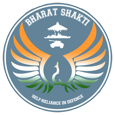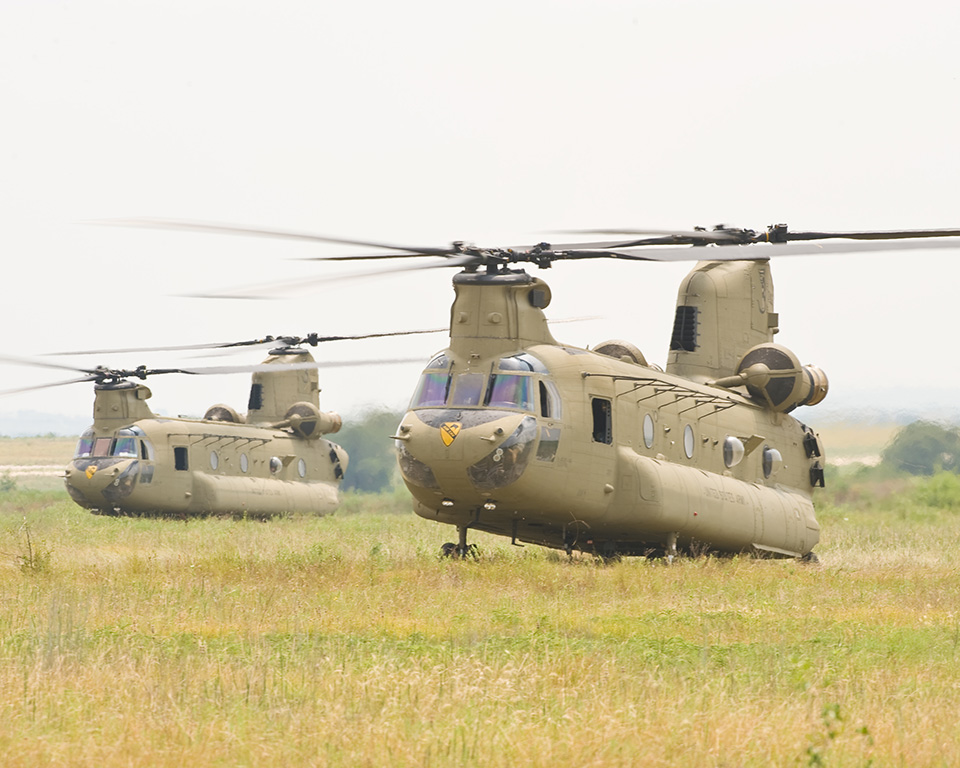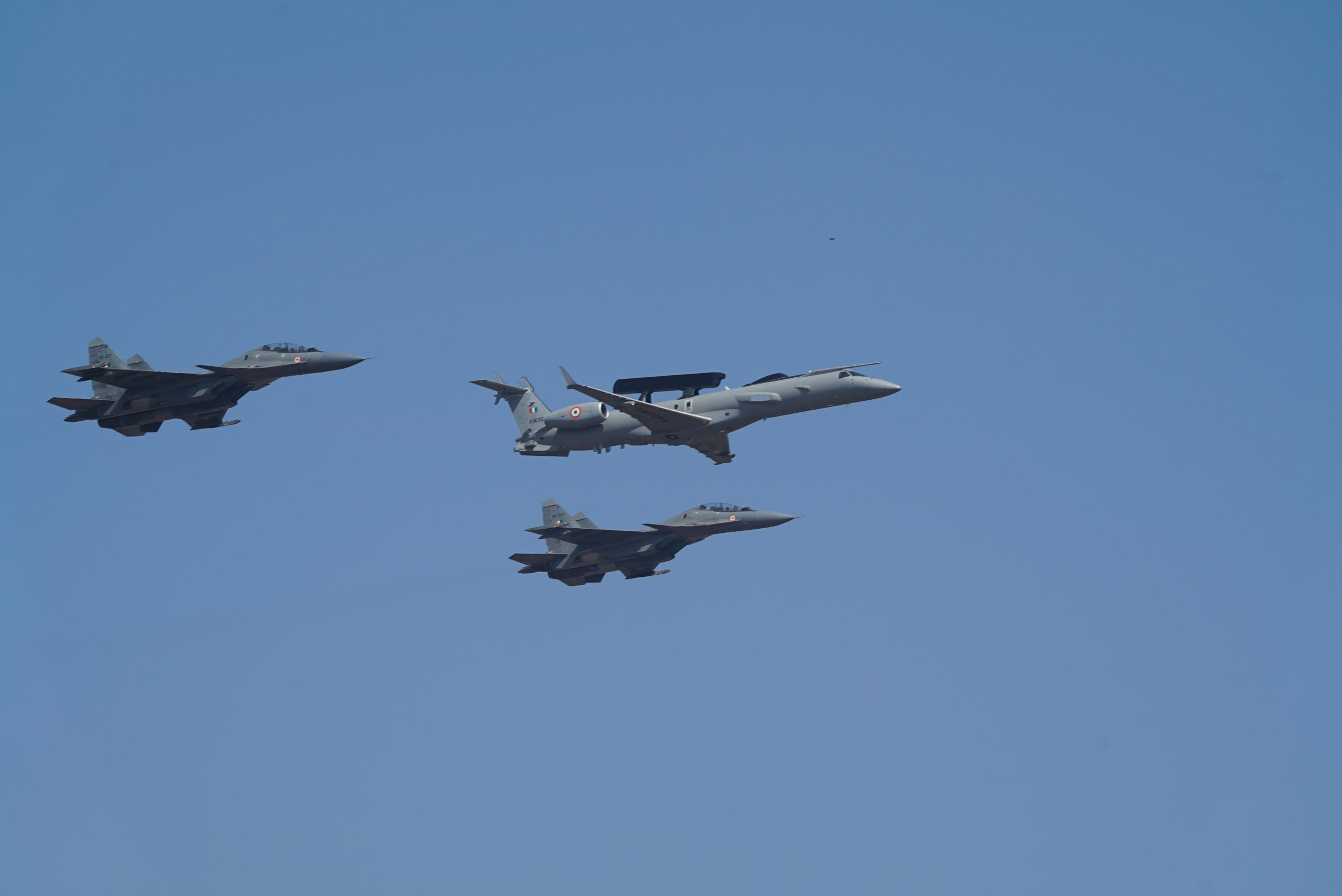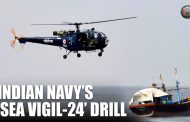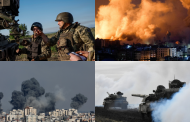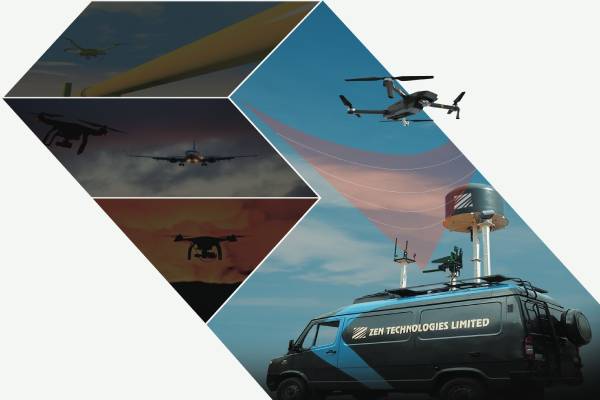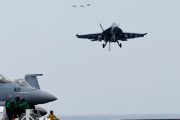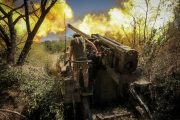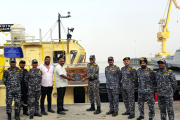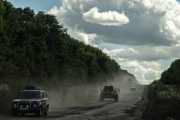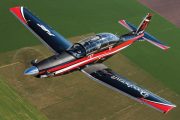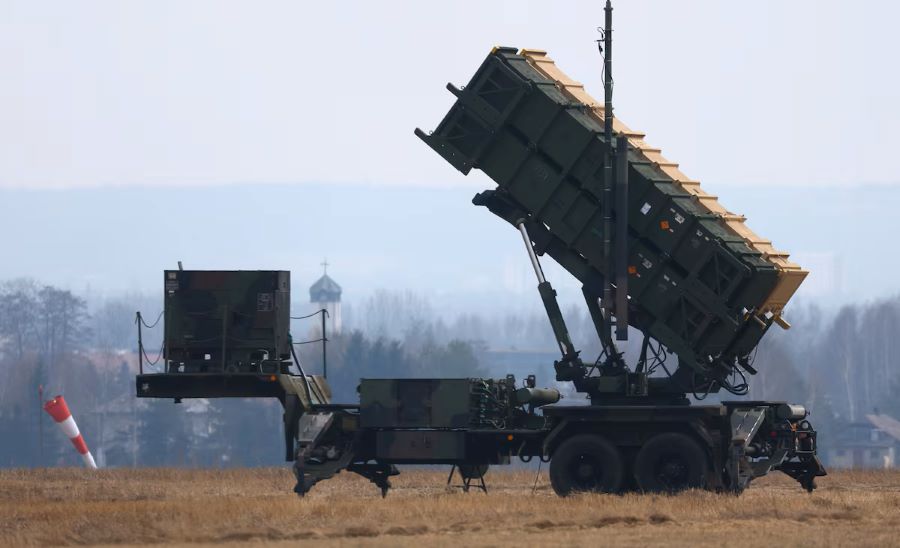Editor’s Note
Helicopters are one of the most versatile weapon platforms that undertake the multifarious task. They are platforms that are an asset to every commander. The Indian helicopter fleet is mostly old vintage and requires immediate replacements. The induction of Apaches will certainly boost our anti-tank capabilities and precision strike from stand-off ranges, while the Chinooks will boost tactical lift. The purchase of these machines has also led to Joint Ventures (JVs) with Indian companies, thereby enhancing their technical and manufacturing capabilities. The author details the capabilities and roles of these helicopters.
………………………………………………………………………………………………………………………….
In the changing character of warfare over the last two decades, the Hybrid War has become a reality. In this war, helicopters are playing a vital role in communication, mobility, logistics and fire support with a special emphasis on operations in mountainous terrain in the Indian context. Helicopters today are an essential and integral part of land, sea and air operations of modern armies and with increased involvement of militaries in sub-conventional operations(counter-insurgency and counter-terrorist operations)across the world, the helicopters have become the key element in the conduct of special operations. Their employment in two major ‘Special Forces Operations’conducted by the United States to get the two most wanted and dreaded terrorists, Osama Bin Laden in Pakistan in 2011 (Operation Neptune Spear) and recently in October this year, ISIS Chief Abu Bakr Al Baghdadi in Northern Syria (Operation Kayla Mueller)are testimony to the same.
India’s own experience in the 1999Kargil conflict highlighted the lack of this critical rotary-wing resource in the mountains, especially in the attack and heavy-lift category. Besides, helicopters world over are the most utilised military asset during peacetime, especially for Humanitarian Aid and Disaster Relief (HADR)operations, due to their ability to operate in the affected areas irrespective of the constraints of terrain and with minimal infrastructure.
Presently, the Indian military has very limited capability in the attack and heavy-lift category, with only a limited number of the old and vintage Russian Mi 25/ Mi 35 and Mi 26 helicopters respectively – these are few in numbers and have limited capability in the mountains. Under these circumstances, the induction of most technologically advanced and state of art helicopters like the Apache and Chinook will provide a major boost to the rotary-wing operational capability of the Indian Military.
Last year India had signed a 3 billion dollar contract with Boeing for the purchase of 22 Apache attack and 15 Chinook heavy-lift helicopters to replace the ageing and depleting fleet of Russian Mi- 25/Mi 35 and Mi-26 helicopters, respectively. Out of these eight Apaches and four Chinooks have already been received by the Indian AirForce and the balance induction is expected to be completed by2022. Another six Apache attack helicopters have also been contracted for and will be delivered to the Army after the induction schedule of the 22 Apaches is completed, thus taking the total number of Apaches to 28, a formidable number.
Additional Chinooks could also be considered at a later stage as HAL has no plans for the manufacture of a heavy-lift helicopter in the future –HAL is currently looking at the prospect of a 10-12 ton class multi-role helicopter for the Indian military – the project is at a conceptual stage,as yet.
AH 64E Apache-Guardian
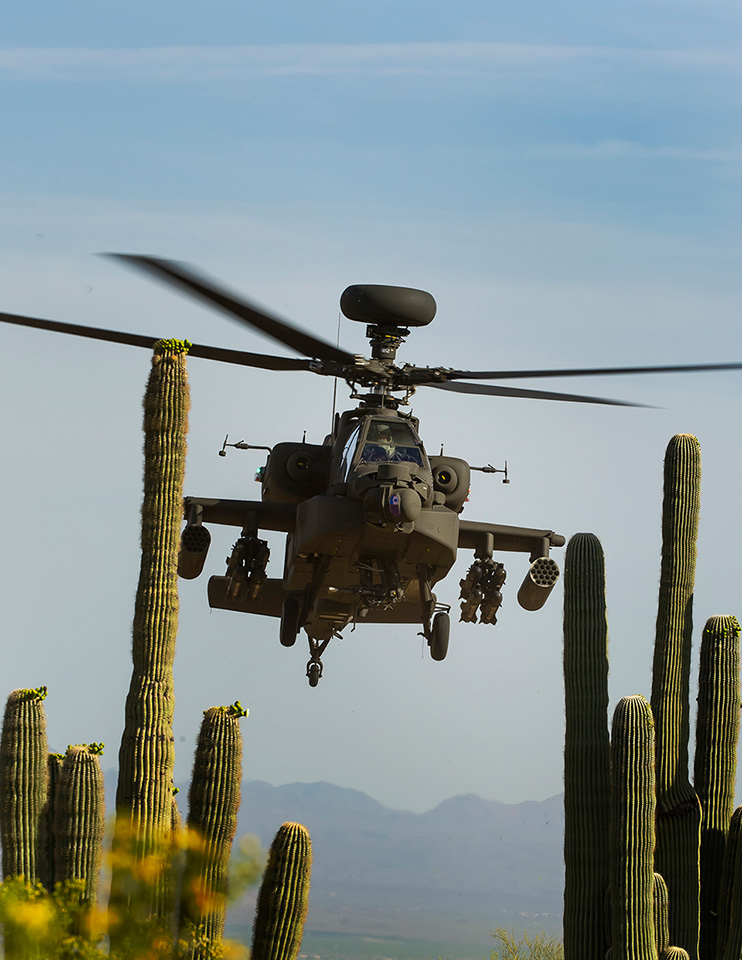
Image Courtesy: Boeing
In September this year, in a ceremony held at Pathankot Air Force Base in Punjab eight AH 64E Block III Apaches were inducted into the Air Force. The second Apache unit is planned for the Eastern Sector at Jorhat, Assam.
The AH 64E BlockIII is the latest upgraded version of the Apache and is currently regarded as the world’s most technologically advanced and lethal attack helicopter. Along with its capability to shoot fire-and-forget anti-tank guided missiles, air to air missiles, rockets and other ammunition, it has modern electronic warfare capabilities which provide versatility to the attack helicopter in a network-centric environment.
The Apache AH 64E has a unique capability to carry out precision attacks at standoff ranges and operate in a congested and hostile airspace environment including threats from the ground. The Apache with its modern onboard systems can transmit and receive battlefield pictures in conjunction with other weapon systems through data networking. The rotor mounted radar can transmit battlefield pictures to Airborne Warning and Control Systems mounted on other aircraft – one of its unique features is its capability to control UAVs.
The Apache is a stealthy and versatile machine with all-weather, day and night capability making it capable of swift deployments during combat. The helicopter is capable of flying further, lower and faster than other similar attack helicopters in the world. With such capabilities the Apache Guardian AH will be a major force multiplier operating as part of combined arms team in support of Strike Corps operations, thereby expanding the ground commander’s battlefield in space and time.
This helicopter gives the commander the ability to apply decisive combat power at critical times virtually anywhere on the battlefield and protects tanks and ground forces in the tactical battle area. The Apache is a game-changer and will be a powerful and decisive tool with the Strike Corps Commander. There is no doubt that in case of a future conflict the 22 Apaches with the AirForce would also be available to support the Strike Corps operations, that being their primary role. These attack helicopters will provide a significant edge in any future joint operations in support of land forces. However, they do have their limitation in operating in high altitude areas for which the Indian military is already in the process of inducting the indigenously built Light Combat Helicopter (LCH) which has already proven its operational capability in higher altitudes. The LCH has demonstrated its capability to land and take off from Siachen range with considerable load, fuel, and weapons that are beyond the capacity of any other combat helicopter.
CH-47F Chinook Helicopter
In March 2019, at a ceremony held in an air force base in Chandigarh, four heavy-lift Chinook helicopters were formally inducted into the Indian Air Force. This was the first batch of the 15 helicopters contracted for with Boeing and will form part of the first unit of Chinooks to be located at Chandigarh, which is the nodal hub for air logistics to the critical Siachen and Eastern Ladakh region. The second unit will be raised at Dinjan in the Eastern Sector to look after the China border where the infrastructure in terms of roads on the LAC is almost non-existent.
The CH-47F is a heavy lift tandem rotor helicopter that currently serves the militaries of 19 countries. It is an advanced multi-mission, vertical-lift platform, which can be used for troop transportation, carrying internally or underslung equipment like artillery guns, light armoured vehicles, heavy road construction equipment and other heavy cargo loads – the Chinook can carrygoods and cargo weighing upto 9.6 Tons.
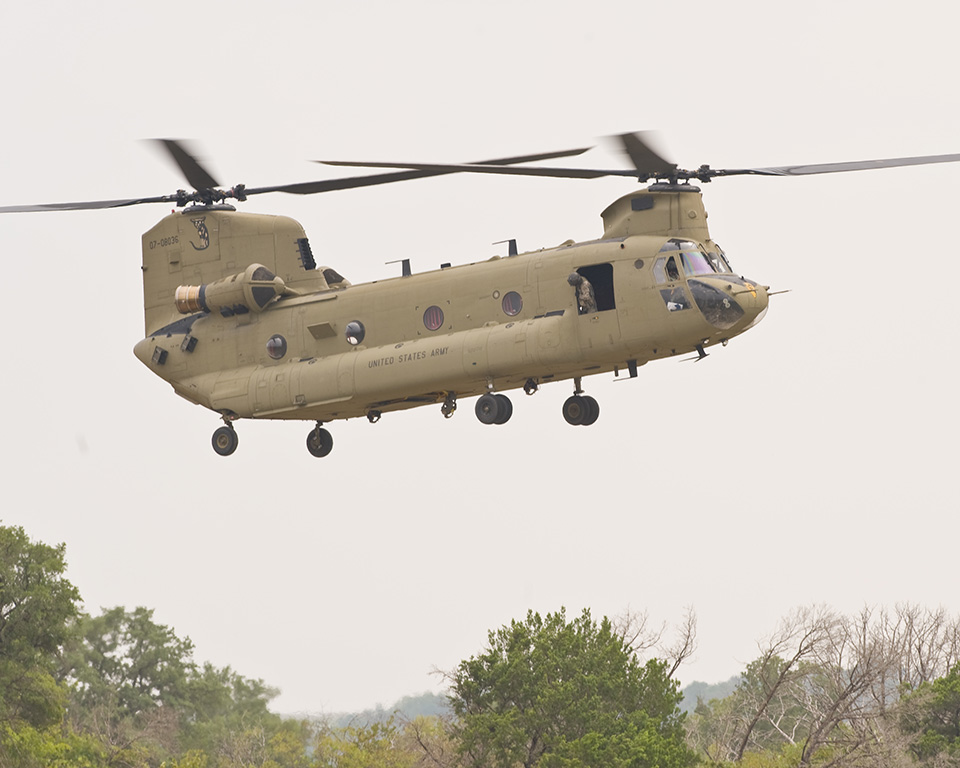
Image Courtesy: Boeing
High manoeuvrability, all-weather day and night capability and ability to operate in the mountains makes it a key force multiplier and crucial strategic asset. It has a fully integrated digital cockpit management system, advanced cargo handling capabilities and electronic warfare suite that complement the aircraft’s performance. Capable of airlifting diverse military and non-military loads into remote locations gives it the unmatched strategic airlift capability across the full spectrum of combat and humanitarian missions – Chinook is the helicopter of choice for HADR operations and will be a great asset for India.
The Chinook is the most operationally tested heavy-lift helicopter which has been the workhorse of the US military in the Iraq wars and continues to be the backbone of their operations in Afghanistan. Its ability to lift underslung the M777 Ultra-Light Howitzer inducted recently into the Indian Army and facilitate inter-valley movement especially in the Eastern sector will certainly be a game-changer for the Indian Military. Presently problems being faced by the Border Roads Organisation in the movement of heavy road construction equipment to forward locations for infrastructure building – the Chinooks should be able to provide ample relief in this regard.
Conclusion
The operational diversities of the Indian Armed Forces coupled with the varieties of terrain (from sea level to high altitude) underline the need for state of art, modern technology helicopters capable of operating both by day and night in a complex battlefield environment of future.In this context, the induction of Apaches and Chinooks will not only give a major boost to the Indian military’s operational capabilities but also enhance its strategic outreach. Their induction has also strengthened and given the desired fillip to the private industry in the manufacture of critical components and assemblies for state of art helicopters like the Apache and Chinook. Boeing and Tata Advanced Systems have formed a joint venture, Tata Boeing Aerospace Ltd (TASL) which is already producing fuselages, secondary structures and vertical spar boxes for the AH 64E Apache and crown and tail-cone assemblies for the Indian configuration of Chinook helicopter.
Similarly, Dynamatic Technologies in a JV with Boeing is manufacturing the ramp and pylon aero-structures for the CH 47 Chinooks. These are very significant developments and a major step towards enhancing defence capability and manufacturing capacity, while simultaneously boosting ‘Make in India’. The Apaches and Chinooks will certainly enhance India’s war-fighting doctrines both at the tactical and strategic level.
By: Lt Gen BS Pawar (Retd)
(Disclaimer: The views and opinions expressed in this article are those of the author and do not necessarily reflect the official policy or position of BharatShakti.in)

